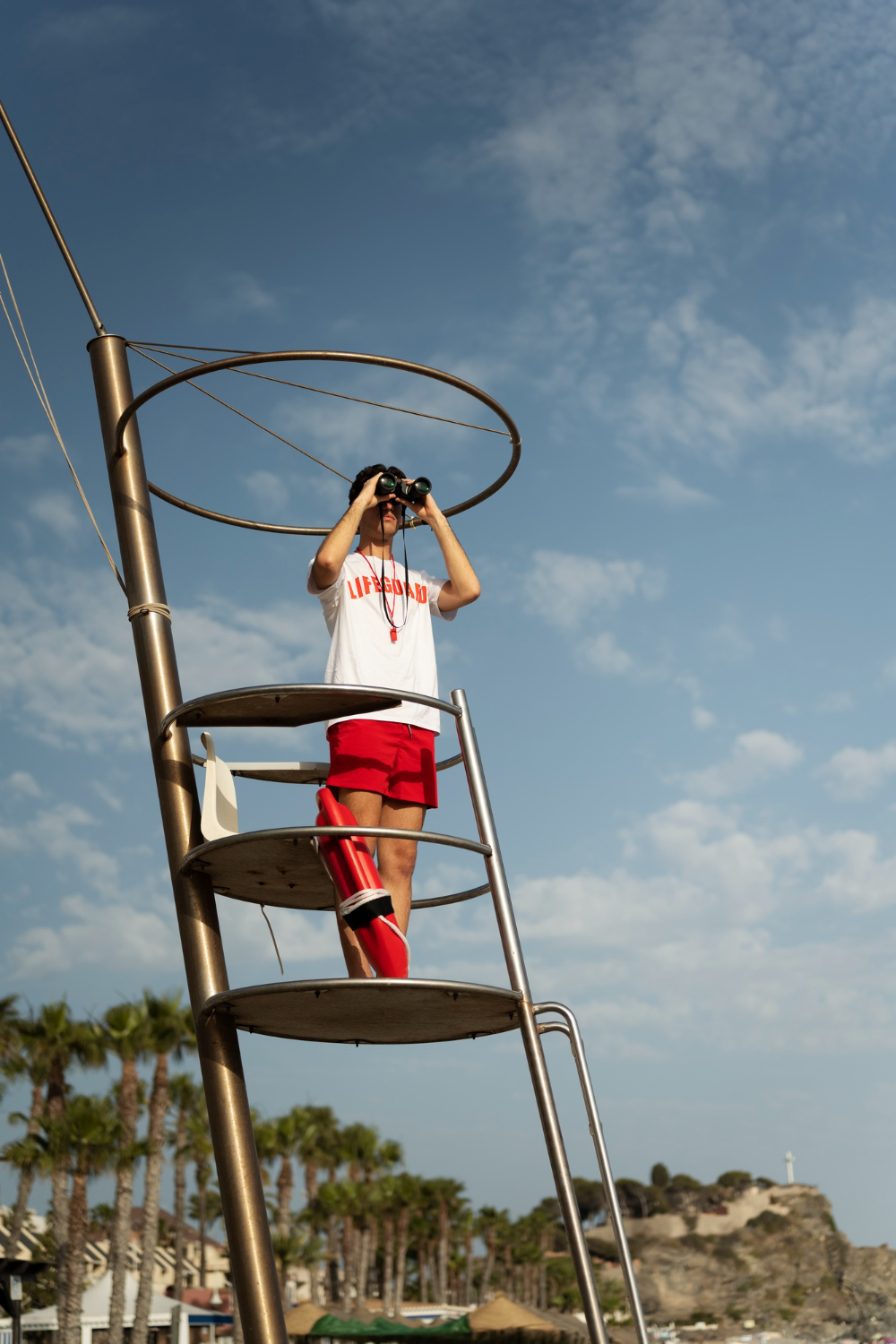Lifeguards
Download Pdf
In summer, with crowded beaches and swimming pools in constant activity, lifeguards need an elevated position to keep an eye on what is happening in the water. Lifeguard chairs form an important part of their work, and their design responds to the conditions they face. Because of its strength and durability, stainless steel is one of the best materials to manufacture these structures.
Corrosion is one of the main factors affecting outdoor furniture, especially in coastal areas. The marine environment, laden with salt and moisture, accelerates the deterioration of many materials. The same happens in swimming pools, where chlorine and other products can damage surfaces over time. Stainless steel resists these agents well, thanks to its composition and the protective passive layer it forms naturally, preventing oxidation and extending its lifespan without the need of coatings.

Chairs must support the weight of the lifeguard and allow him or her to get on or off quickly, so structural stability is important. The design of these chairs takes into account safety and regulatory aspects. It is common for them to include non-slip platforms, steps with grip and support handrails to facilitate access for the lifeguard. The stainless steel, for its part, provides the necessary strength to guarantee a reliable surveillance point, without movement nor deformation.
Maintenance is minimal, which reduces costs and avoids service interruptions. In addition to this, they have a clean and modern look, which fits in urban pools but also in natural environments as we have seen in previous articles.
Thanks to all these qualities, lifeguard chairs are usually made of AISI 316 and AISI 316L stainless steel, as they are highly resistant to corrosion and guarantee the necessary safety and integrity of the platform to carry out the daily work of a lifeguard.